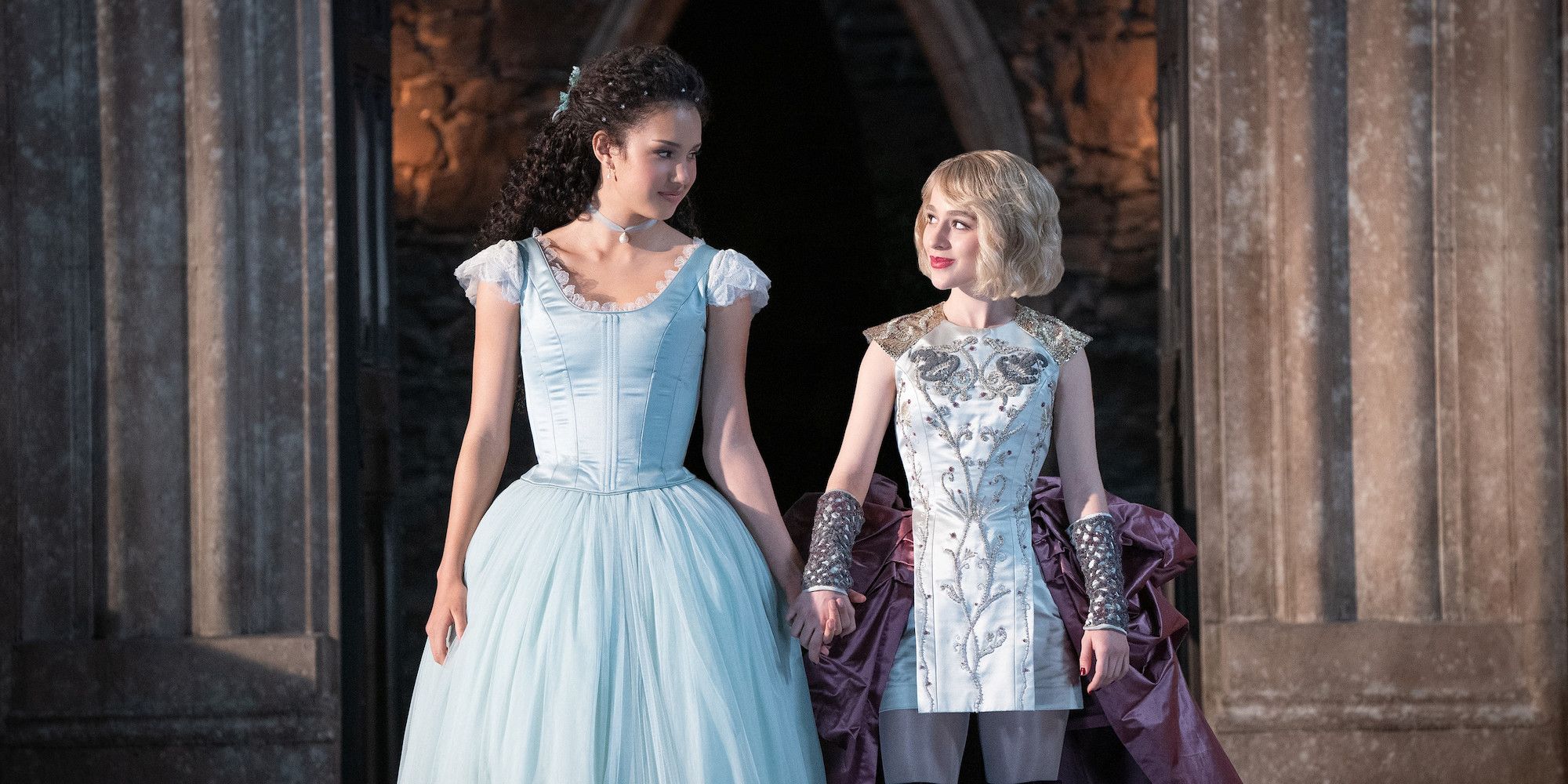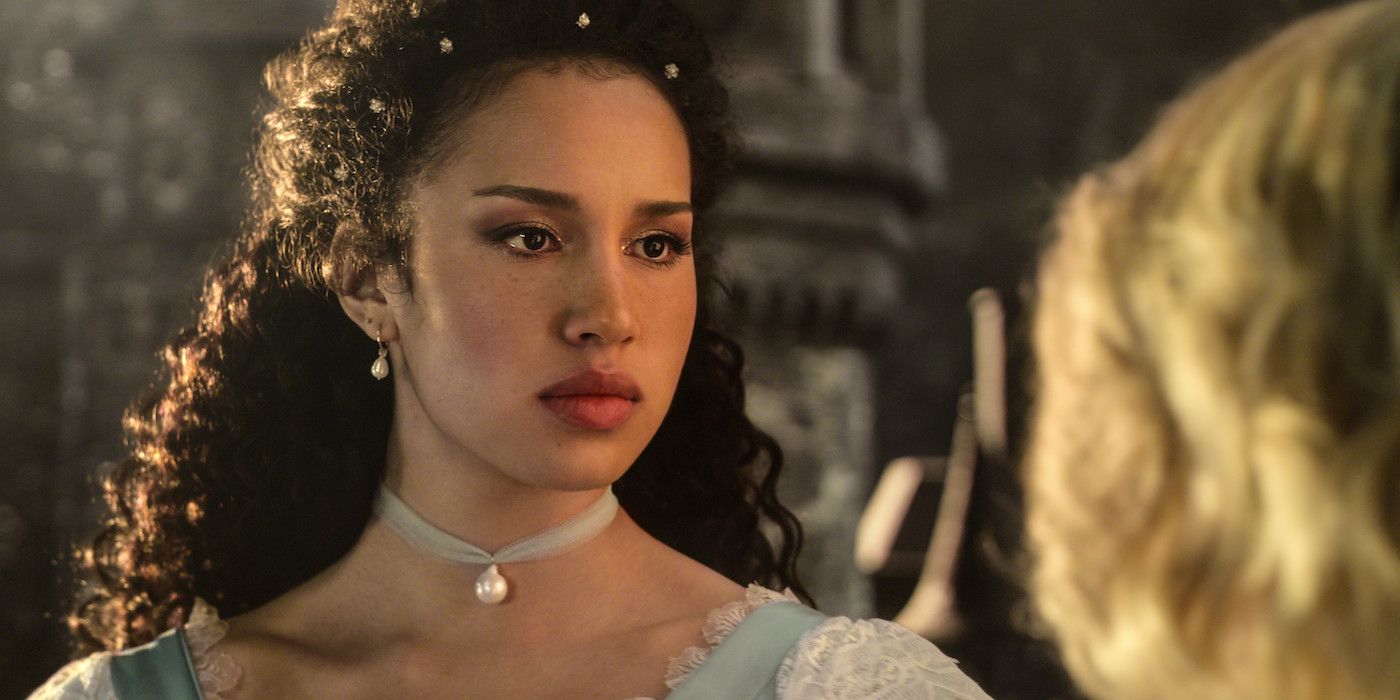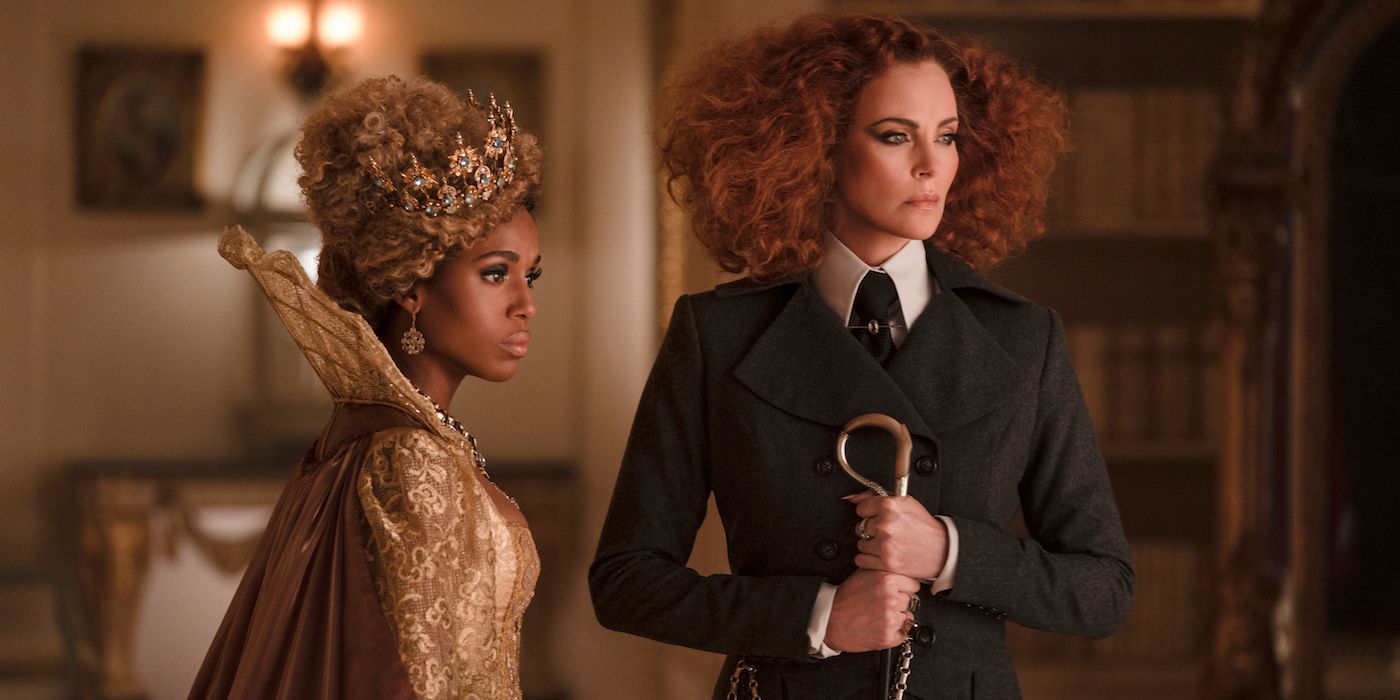The world of fairy tales can be wondrous, and there are plenty of filmmakers who have taken the opportunity to remix past stories, working from a familiar template while adding something new and refreshing. Based on the 2013 novel by author Soman Chainani, The School for Good and Evil, directed by Paul Feig from a screenplay he wrote with David Magee, is a mashup of various fairy tales interpreted differently. Although the Netflix film doesn’t reinvent the wheel and goes on for too long, The School for Good and Evil is a lot of fun and has plenty of heart thanks to its leading performances and solid character development.
Agatha (Sofia Wylie) and Sophie (Sophia Anne Caruso) are best friends who live in Gavaldon, a town where no one really likes or respects them. Consistently made fun of on their daily walks, Agatha and Sophie rely on each other and their solid bond to get through the days. However, after hearing the story of a young woman who was kidnapped and taken to a magical realm, Sophie makes a wish to be taken to this special place in a bid to get away from her suffocating household. When Agatha tries to stop her, they both end up in a fantasy realm of fairy tales, where the Schools for Good (the “Evers”) and Evil (the “Nevers”) reside, their purpose to maintain the balance between the two sides. Although Sophie believes she should be in the School for Good, it’s Agatha who ends up there, and the Headmaster (Laurence Fishburne) is convinced the Storian, a magical book that writes out the characters’ fates, is never wrong. Things are made all the more complicated when the villainous Rafal (Kit Young) returns and sets his sights on Sophie.
Unlike other fairy tale interpretations or fantasy stories set in a magical realm, The School for Good and Evil sets itself apart by leaning into all the arguments it makes. The idea that someone isn’t purely good or evil is not a passing line of dialogue, but a fully fledged discussion that is often brought up to make a point and make the other characters — who have become too complacent — to properly think. Agatha pushes the envelope and leads the charge in terms of questioning the credibility of two schools that are so adamant about putting their students into already defined boxes and having them fit regardless of who they are. She’s empathetic and kind, strong-willed and powerful; Agatha is the driving force of the film and her friendship with Sophie is the heart of the story. While they’re helped by decent writing, Sofia Wylie and Sophia Anne Caruso work hard to make Agatha and Sophie’s friendship believable, and it pays off.
The film doesn’t fall short in their character development, either, with Sophie and Agatha being fully realized people. They have preconceived notions, goals, and a lot of love for each other. They’re opposites in a lot of ways, but the story engages with how one can so easily go astray and be disappointed when the reality of a situation doesn’t live up to expectations, as well as how one’s own perception of themselves can be so different to how others see them. Beyond the story and the leading ladies’ relationship, the film is uplifted by a great supporting cast, including Charlize Theron and Kerry Washington — who look like they’re having a fabulous time playing in this world — as two of the warring schools’ professors. The School for Good and Evil also has a lot of flair. The costume designs by Renee Ehrlich Kalfus are magnificent, giving the film simultaneous dream-like and gothic feel to accentuate the differences between schools. The set design is lovely and everything comes together nicely, including an excellent soundtrack, to make this fantastical world feel lived-in.
What’s more, the film shows how easy it can be to become arrogant regarding status and how that can drive one to ignorance and cruelty towards anyone who dares push them outside their comfort zone. To that end, The School for Good and Evil is a breath of fresh air. It doesn’t take itself too seriously, and it’s not too concerned with modernizing the world in which it exists, but in showcasing and exploring certain themes that elevate the narrative and characters. This isn’t a brain-dead film, but a stylish, engaging, and often quite fun movie that, while certainly meant for a younger audience, is enjoyable for all ages. The dialogue isn’t always great, but it’s still delivered with enough believability that offsets any potential cringe. What perhaps drags Feig’s film down is its lengthy runtime. At just a little under two and a half hours, The School for Good and Evil is unnecessarily long and, at times, the runtime causes the film to drag. However, its length doesn’t have too much of a negative impact on the film, which is ultimately very delightful.
The School for Good and Evil began streaming on Netflix October 19. The film is 147 minutes long and is rated PG-13 for violence and action, and some frightening images.



